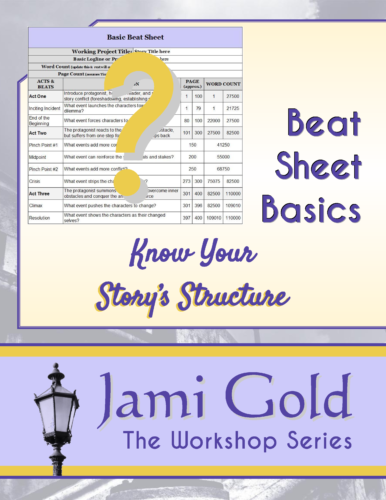Most tips for creating sympathetic characters point out that our characters need flaws. And that’s very true. But it can be a real trick to show flaws for characters who bottle up their emotions in an attempt to hide their weaknesses. While very common, that defense mechanism can leave very little for us, as authors,
Ready to Learn More about Writing?
The Learn About Writing section of Jami's blog is filled with tip-heavy posts about writing skills and concepts that improve our stories.
Sample topics:
* avoiding information dumps
* using point of view
* adding subtext
* using themes
* building scenes, etc.
If you want even more writing advice, be sure to check out Jami's Craft Highlights page, which features some of her most-helpful posts on this topic, as well as on editing craft, pacing, story flow, and more. On that page, you can also find links to related free worksheets/tools and information guides.
Or want to refine these results? The Search page offers many filtering options.
We’re probably all familiar with the idea that poetry, music, and song lyrics can have rhythm. But prose writing—our normal, everyday writing with sentences and paragraphs rather than lines, stanzas, and verses—can have a rhythm too. I’d occasionally heard a rhythm in my head while reading stories but never paid much attention. Several years ago, when I
We’ve probably all heard the advice to “show don’t tell” more times than we can count. Like most advice, it’s worded as an absolute, making it seem as though telling is never okay.
Once we’re experienced, we know that’s not true. Some telling is absolutely okay, and in certain cases, is preferable to showing.
I’ve gushed many times about the awesomeness of Janice Hardy’s blog—for good reason. Her writing tips are clear and insightful. She discusses topics more thoroughly than most. And it’s a rare thing when I can’t find an answer to a writing question there. She’s also a super-fantastic person (I’ve met her in real-life, so I
Last year, I wrote a series of posts about a fabulous presentation by Michael Hauge on “Using Inner Conflict to Create Powerful Love Stories.” But the teachings I picked up from the presentation went far beyond being applicable only to romance. Blogger extraordinaire Janice Hardy was in the workshop with me, and she wrote a fantastic blog
In the comments of my post about the number one writing rule, we shared some of the bad advice we’ve heard. Many of the examples didn’t point out advice that’s inherently bad, but rather advice that doesn’t apply equally to all situations. Carradee shared the example of a writer who naturally overwrites and gives the
Several months ago, I saw a fascinating Storify by Carina Press editor Angela James. I meant to do a post about the issue she brought up, but I often have more blog post ideas than time. With my recent articles about subtext, genre stories, formulaic writing, and my guest post at Paranormal Unbound about tropes
Last week we discussed the messages and meanings hidden within genre stories. Sometimes we, as writers, might not be aware of all the impressions readers take away from our writing. The messages readers get from our writing aren’t always explicitly stated. That is, a story’s meaning and hidden messages lurk in elements like subtext, theme, and
Last time we touched on beat sheets because of a guest post I wrote for one of my Blogiversary winners. Today we’re going to talk about a subject that came up with one of my other Blogiversary winners: prologues. Prologues are hated by many editors and agents. Surprisingly, I’ve heard from readers who say they

